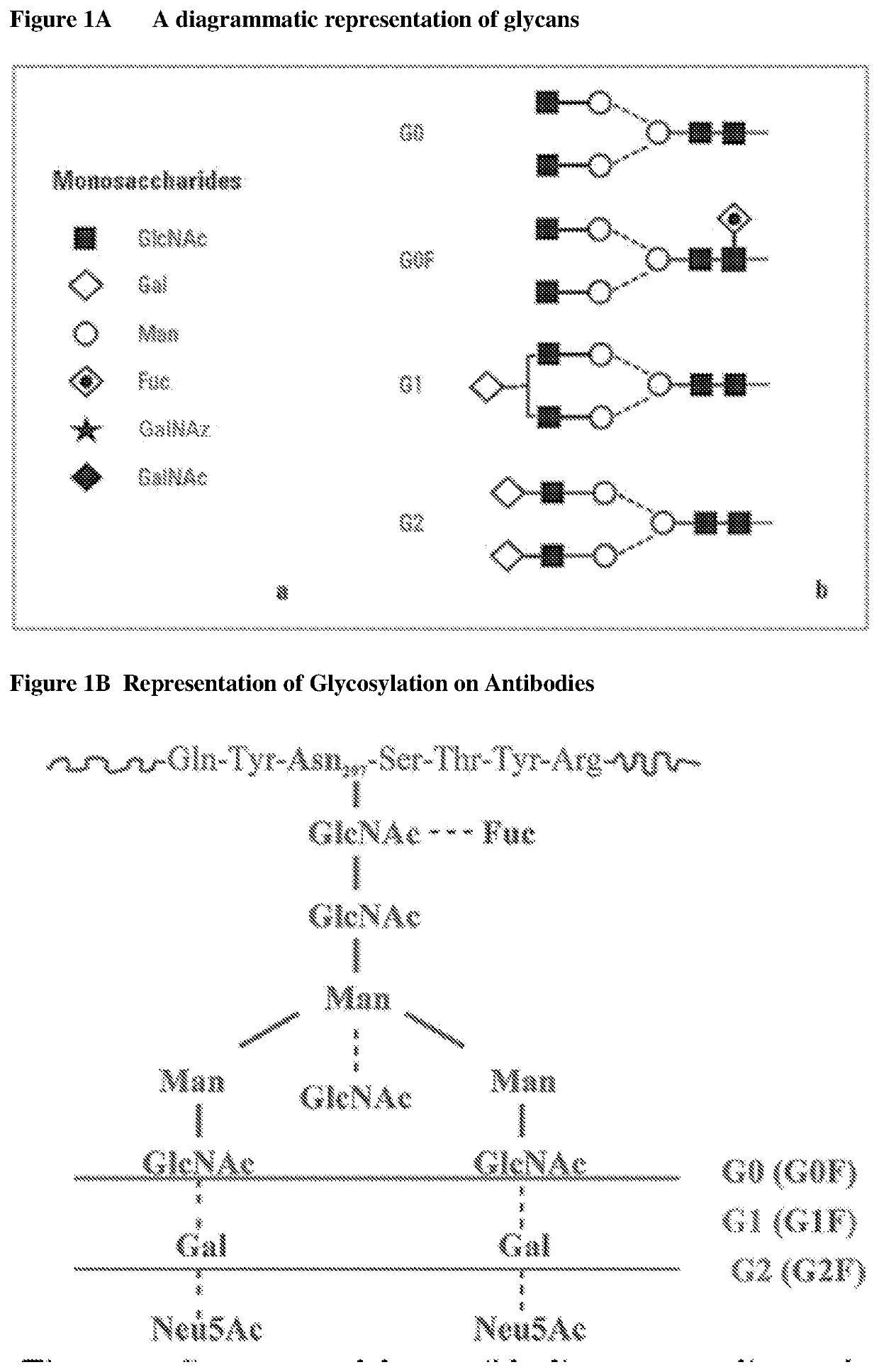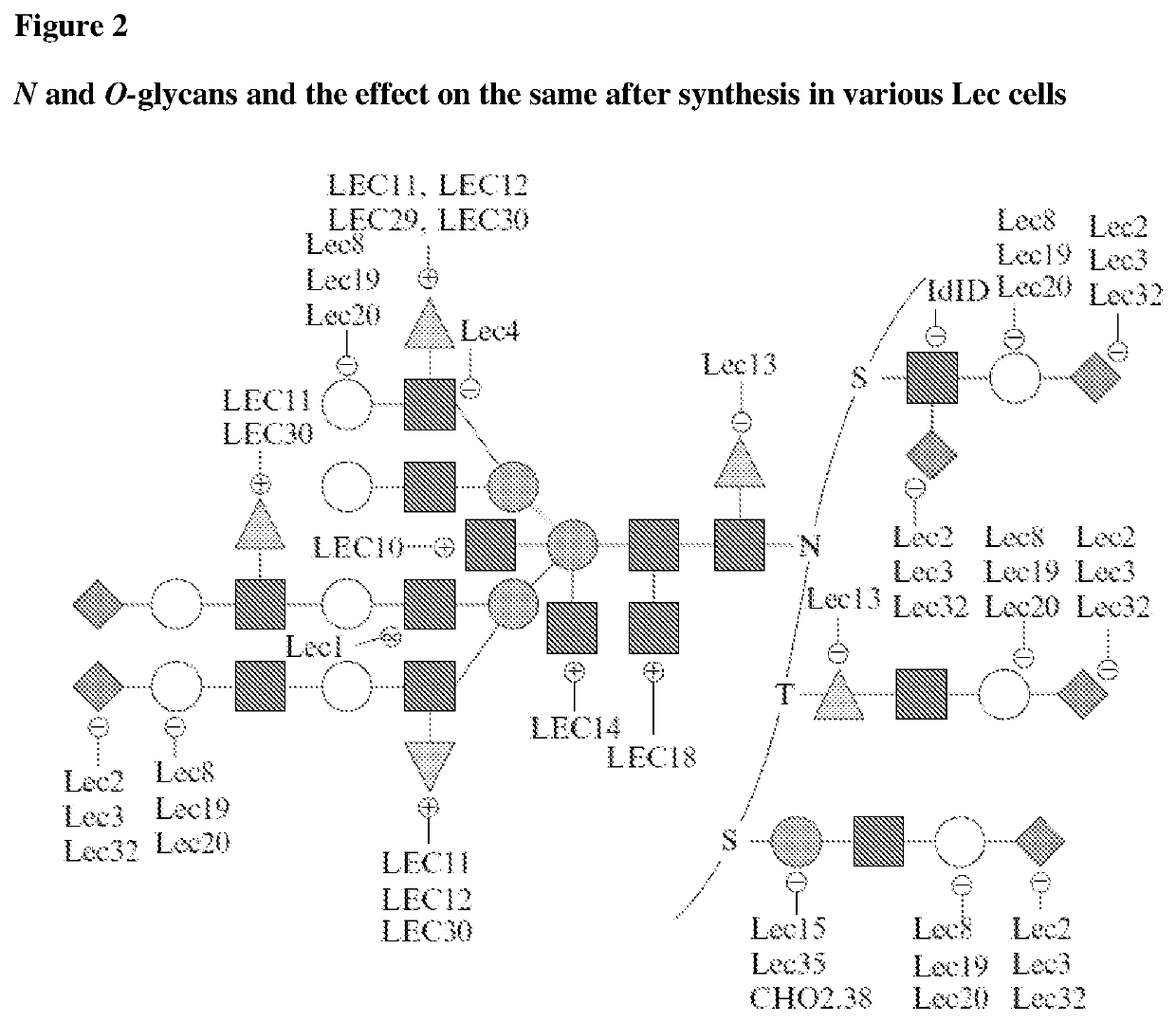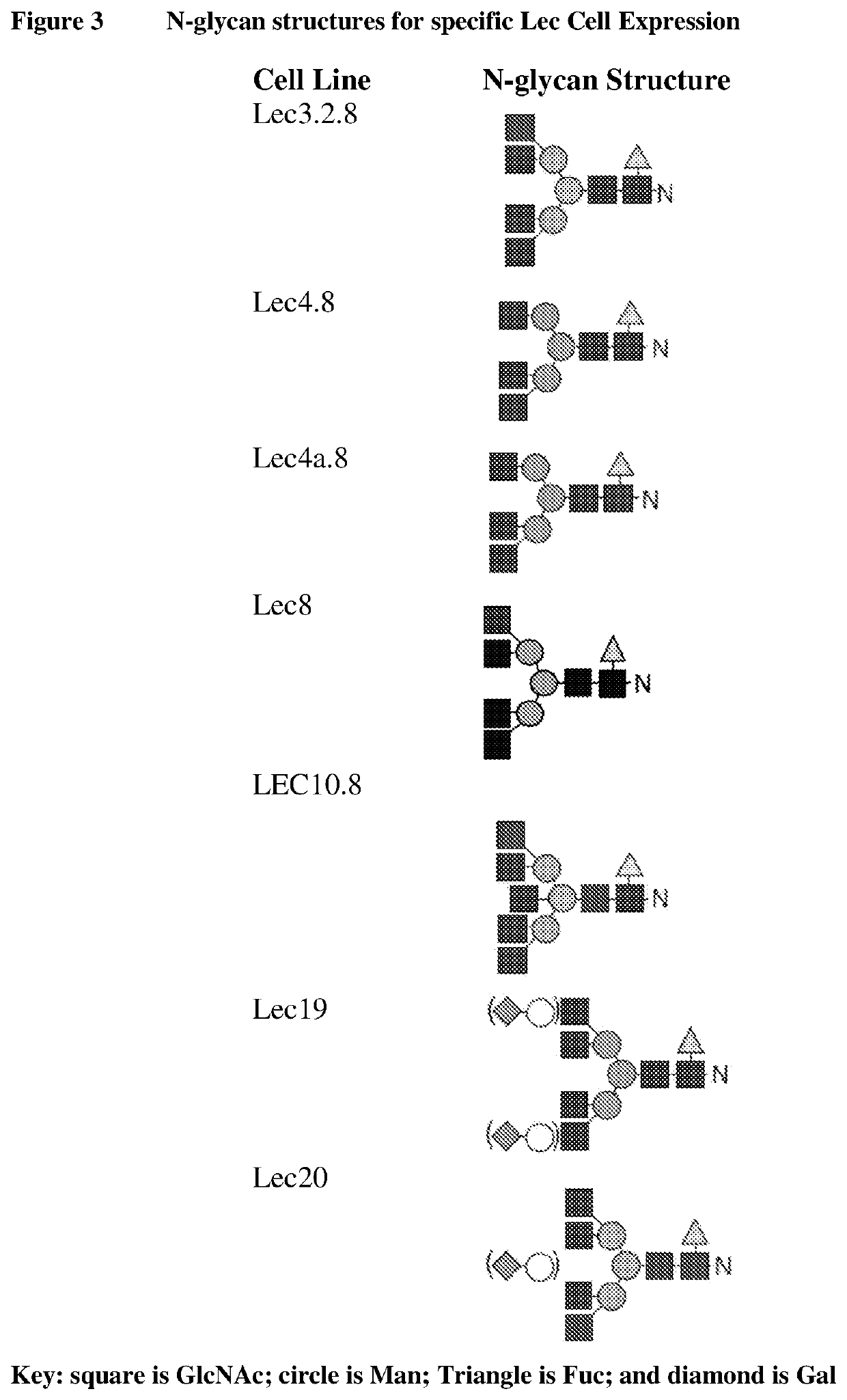Methods for preparing antibodies with a defined glycosylation pattern
a glycosylation pattern and antibody technology, applied in the field of preparing antibodies with a defined glycosylation pattern, can solve the problems of difficult to secure sufficient quantities of pure active enzymes, complex and expensive antibody manufacturing, etc., and achieve the effect of increasing the space for the payload
- Summary
- Abstract
- Description
- Claims
- Application Information
AI Technical Summary
Benefits of technology
Problems solved by technology
Method used
Image
Examples
example 1a chemical
Synthesis of UDP-GalNAz
[0233]
Generation of G0F Glycosylated Antibodies by Two Alternative Methods
example 2
CHO-LEC8 Host Cells are Capable of Expressing a G0F N-Glycoform of an IgG Antibody
[0234]Suspension adapted CHO LEC8 cells were maintained in M30V2 (in house medium) growth medium in 2 L vent capped shake flasks in an orbital shaker at 37° C., 8% CO2, 80% humidity, and 120 rpm (Infors USA, Laurel, Md.). Cells were seeded at 6×105 cells / ml the day before transfection and adjusted to 1×106 cells / mL to maintain cells in log phase on the day of transfection. PEImax (Polysciences) and plasmid DNA bearing antibody of interest were diluted into 150 mM NaCl at the final concentration of 240 μg / ml and 60 μg / ml, respectively. Equal volume of diluted PEI was added into the diluted plasmid DNA. After 1 minute incubation at room temperature, the PEI / DNA mixture was added to the CHO-LEC8 cells at the final concentration of 1 μg per ml of culture volume. Cell culture were fed with 0.8% of feed medium F09 (in house medium) and 0.05% of feed medium F10 (in house medium) every other day from the 3rd d...
example 3
the Substrate Treated with GalT(Y289L) to Transfer GalNAz from UDP-GalNAz Prepared in Example 1a
[0235]The mutant Y289L GalT (final concentration, 0.20 mg / mL, 4.5 μM) was dissolved in 25 mM Tris buffer, pH 7.2 containing 150 mM NaCl and 5 mM MnCl2. UDP-GalNAz and antibody were added to final concentrations of 0.6 mM and 1.0 mg / mL (6.7 μM), respectively. Reaction was incubated at 30° C. for 16 h. The excess of reagent was removed by washing with Tris buffer using a 50 kDa cutoff spin filter (Amicon® Ultra-4 centrifugal filter), after which an aliquot of the azide-modified antibody was removed for product analysis by LC-ESI-MS (FIG. 5A). The antibody concentration was determined by the bicinchoninic acid assay (Pierce™ BCA protein assay), and diluted by Tris buffer (25 mM Tris-Cl, 150 mM NaCl, pH 7.2) to 1 mg / ml concentration.
[0236]MALDI TOF analysis for the antibody GalNAz product obtained is shown in FIG. 7A. The MALDI TOF analyse after conjugation to a DIBO-modified probe is provide...
PUM
| Property | Measurement | Unit |
|---|---|---|
| molecular weight | aaaaa | aaaaa |
| molecular weight | aaaaa | aaaaa |
| molecular weight | aaaaa | aaaaa |
Abstract
Description
Claims
Application Information
 Login to View More
Login to View More - R&D
- Intellectual Property
- Life Sciences
- Materials
- Tech Scout
- Unparalleled Data Quality
- Higher Quality Content
- 60% Fewer Hallucinations
Browse by: Latest US Patents, China's latest patents, Technical Efficacy Thesaurus, Application Domain, Technology Topic, Popular Technical Reports.
© 2025 PatSnap. All rights reserved.Legal|Privacy policy|Modern Slavery Act Transparency Statement|Sitemap|About US| Contact US: help@patsnap.com



